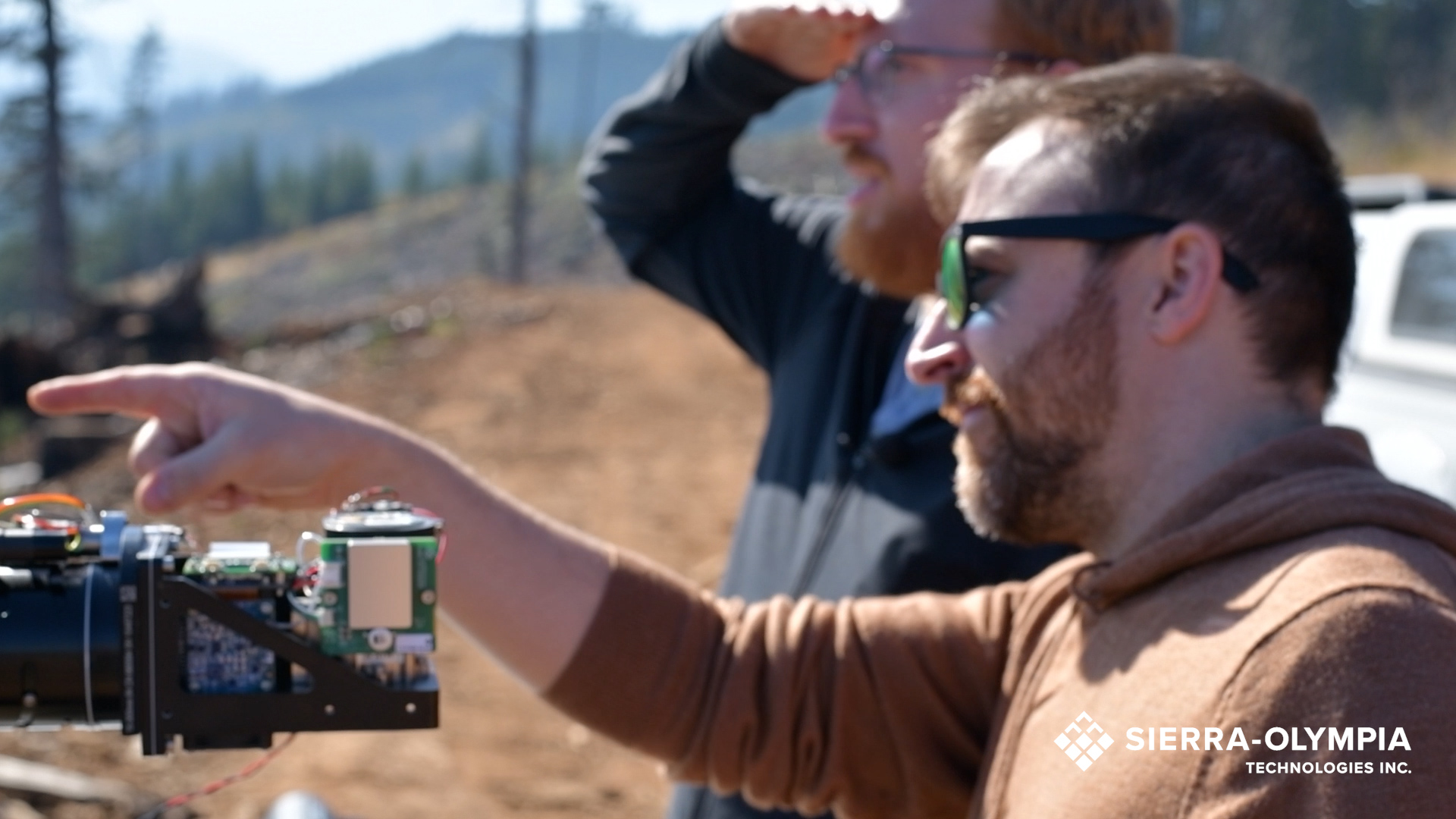Last modified on July 23rd, 2024 at 7:41 am
Sierra-Olympia is always testing the capabilities of its products
We recently tagged along with two of our Engineers, Tim Decker and Jacob Begis, on their most recent test with the Ventus Hot 900, a system mostly used for long range security. We conducted tests to detect, recognize and identify (DRI) objects or people from far distances.
Detection – The ability to distinguish an object from its background
Recognition – The ability to classify the object as vehicle, human or other subject.
Identify – The ability to describe the object in detail, a human with a shovel, a specific type of animal.
What is DRI and why is it important?
A DRI model predicts the probability of Detecting, Recognizing, or Identifying a specific target with a specific camera under a given environment over range. Typically, the output of a DRI model is table of range values that correspond to a 50% probability or D, R or I.
DRI is useful because it can account for factors that are often overlooked in system modeling, such as atmospheric turbulence, atmospheric attenuation, platform jitter and a human’s vision. The Night Vision Integrated Performance Model (NV-IPM) is used to generate DRI predictions. NV-IPM was developed by the United States’ Night Vision Lab, located in Fort Bevoir, VA.
Range predictions are often shared by camera vendors, but due to the nature of modeling the advertised ranges are often optimistic and potentially misleading. Advertised range values typically assume as-designed performance (as opposed to as-built) and minimize atmospheric and environmental effects.
Describe the Test – 10km with a Ventus HOT 900
SOTI decided to test our DRI model with the Ventus HOT 900 – the 45-900mm, F/4.0, 640x512x15um MWIR camera. Given its 20x optical zoom, a relatively fast F/4.0 aperture the Ventus HOT 900 is well suited for long range surveillance applications.
We set up a top Post Canyon in Hood River County, Oregon. We mounted our camera to our steadiest tripod and coordinated some targets at range. The targets included a small UAV (DJI Mavic), our colleague Scott and his Pickup Truck. We wanted to see if we could detect, recognize, or identify these targets at range. The initial targets were ~10.5 km range, while the municipal airport was closer to 6 km range.
Predicted results (Jacob’s Model)
For my model, I assumed very low atmospheric turbulence (, and used Beer’s law for atmospheric attenuation (85% transmission per km). I assumed no platform jitter, diffraction-limited lens performance and the as-specified noise characteristics of the detector (the model was optimistic).
Using the characteristic dimension of Scott’s pickup truck (about 3.1 meters) and assuming a standard target temperature delta, NV-IPM generated the following DRI probabilities vs. Range. At our 10.5 km range, we should have ~75% chance of identifying the pickup truck. When you watch the video, you can decide for yourself.

Next, Scott got out of the truck, and we attempted to recognize him at range. Scott is over 6 feet tall, so his characteristic dimension is a little larger than standard. The model predicted that we would have a decent probability of recognizing Scott at 10.5km (40%), and a low possibility of identifying Scott (20%). Recognize means that we can tell that it is person, while identify means that we can tell what the person is doing/holding. In this case we were able to recognize Scott while he was moving. When he was standing still it was unclear if it was a detect or recognize.

The standard task difficulties (the V50 figure) are based on how many cycles/targets are needed to detect, recognize, or identify a target given its class. Note that cycles/target is not equivalent to pixels /target. For example, task difficulty of detecting a human (V50 = 0.5) is easier than for a vehicle (V50 = 2.0), while the difficulty is the same of identification (V50 = 13). Recognize and identify are therefore somewhat subjective, especially when assessing if a predicted probability makes sense. Therefore, DRI models work best when doing trade studies (relative comparisons of different cameras for a given target/environment.

